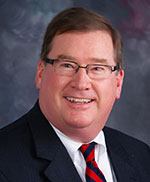Last winter, the U.S. Environmental Protection Agency’s Chesapeake Bay Program pulled together a “panel of experts” to look at lawns, lawn care and the impact lawns have on water quality in the Chesapeake Bay.
The expert panel’s conclusion, based upon a review of all the science and research done on the topic, was that a “dense vegetative cover of turf grass” on a lawn reduces pollution and runoff. If your lawn is thin and sickly, pollution and runoff from a lawn increases dramatically. Download the report here.
In other words, the healthier a lawn, the better it is at controlling pollution that can affect water quality in streams and rivers, and eventually the Chesapeake Bay.

Those of us who have been following this issue knew this was the case from the research. But the industry saying it was one thing; the EPA saying it quite another matter.
The conventional “wisdom” up to this point and the attitude around EPA was that fertilizing your lawn was bad for water quality. In fact, the opposite is true. The research shows that a responsible program of lawn fertilization will actually improve water quality in the Bay.
The report’s data show that, on the whole, lawns in the Chesapeake Bay watershed are under fertilized, with 50 percent receiving no fertilizer at all. Do-it-yourself homeowners fertilize only an average of 1.7 times per season, while the report recommends three to four applications per year. Ninety-one percent of those who apply any fertilizer are do-it-yourselfers.
The good news for our industry is that only 4.5 percent of all lawns in the Chesapeake Bay watershed are cared for by professionals, indicating a tremendous opportunity for growth in the region.
EPA recommends consulting LCOs, cultivating dense turf
Adding to the good news for our industry is the report’s first recommendation for Bay-friendly lawn care practices is for homeowners to “Consult with the local extension service office, certified plan writer or applicator to get technical assistance to develop an effective urban nutrient management plan for the property, based on soil test analysis.”
Let me translate that: EPA is recommending that homeowners consult our industry to develop a plan to care for their lawns.
Its second recommendation is what I believe is the summation of all the research on the topic of lawn care and water quality:
Maintain a dense vegetative cover of turf grass to reduce runoff, prevent erosion and retain nutrients.
The research demonstrates that dense vegetative cover helps to reduce surface runoff, which can be responsible for significant nutrient export from the lawn, regardless of whether it is fertilized or not. Dense cover has been shown to reduce surface runoff volumes in a wide range of geographic settings and soil conditions.
If a lawn does not have a dense cover, it has an elevated risk for nutrient export, especially if soils are compacted or slopes are steep. In these situations, the primary nutrient management practice is to identify the factors responsible for the poor turf cover, and implement practices to improve it (e.g., tilling, soil amendments, fertilization or conservation landscaping).
To put this in clearer language, healthier lawns mean a healthier Chesapeake Bay.
And if this isn’t enough, the report recommends that fertilizer be applied in small doses over the season in three to four applications. The report then cites research that confirms that it’s the practice of lawn care companies to apply fertilizer in four to five smaller applications over the course of the season.
It would be hard to ask for a better endorsement of our industry than these three recommendations in the report:
1). Consult a professional in developing a lawn care plan;
2). Keep a thick, healthy cover of turfgrass on your lawn; and
3). Use best management practices like those the lawn care industry already has adopted.
The report contains other common-sense recommendations you should already being doing, like sweeping fertilizer that has gotten onto sidewalks, driveways and streets back into the lawn.
The most important thing for us as an industry is to use this gift that EPA has given us. Make sure your customers and prospects know that by hiring you to care for their lawn, they are protecting water quality in their rivers and streams. EPA says so.
Well, what are you waiting for?
Gregg Robertson is government relations consultant for the Pennsylvania Landscape & Nursery Association. From 2002 until May 2013 he served as president of that organization. Email him at grobertson@PLNA.com.

